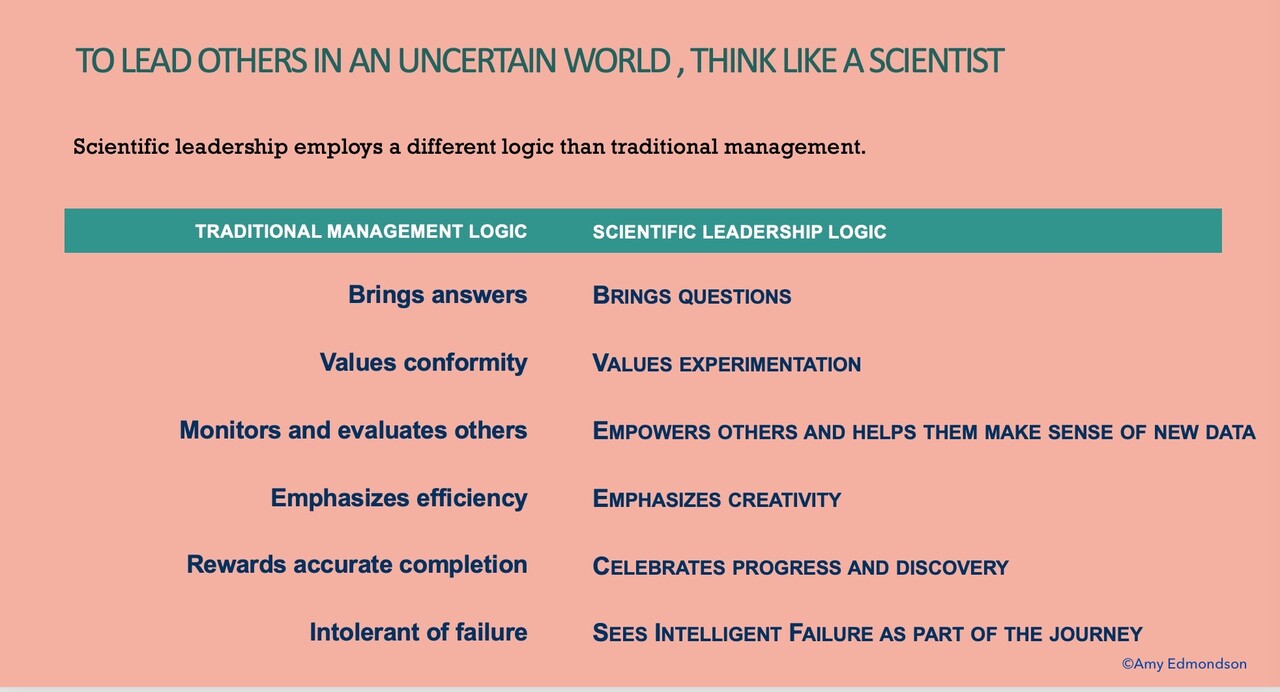From the New York Times: There’s a Better Way Than “Quiet Quitting”
Delighted to see myself quoted in the weekend’s New York Times. This article is worth a read. https://www.nytimes.com/2023/07/30/well/mind/work-stress-quitting.html

Delighted to see myself quoted in the weekend’s New York Times. This article is worth a read. https://www.nytimes.com/2023/07/30/well/mind/work-stress-quitting.html

Today’s leaders must learn to think like scientists.
This does not mean you pick up a pipette and stop being a manager, dedicated to creating value for customers. Instead, thinking like a scientist means understanding that your job is to navigate uncertainty with curiosity and passion – so as to engage others in the inherently collaborative process of progress and discovery through which today’s knowledge work gets done.
Most managers are unaware of the quiet hold that industrial-era logic has on their thinking. They’re unaware of, or spend little time reflecting on, the deeply-rooted belief that they’re supposed to have the answers, control what others do, and be intolerant of failure. They fail to recognize the role of creativity in solving the many problems that invariably come up. This mindset can make it seem that keeping people a little bit afraid of you will help ensure that they hit their targets. But unfortunately, fear mostly just means that managers will be kept in the dark, unaware of what’s really going on. They are more likely to find themselves in a state of happy ignorance than in a state of helping to make sense of what’s going on and helping people solve the problems that inevitably occur.

When you actively shift your thinking to see your role as helping others find answers by conducting smart experiments and learning from what happens, other helpful leadership behaviors follow. These allow you build the psychological safety people need to team up, experiment, and solve problems.
The bottom line is this: In today’s complex, uncertain world, the traditional management logic that worked so well for top-down control of predictable processes is not only inadequate, it’s actually destructive to performance.
So pull up a chair alongside your favorite scientist and really take in the way she or he thinks. It’s instructive, I promise. I do it every day.
This is the article I’d have written myself, if only I knew things about improv! FANTASTIC table here expressly linking #improv to concepts from my book #TheFearlessOrganization. You won’t regret taking a peek.
psychologicalsafety #intelligentfailure
A common misperception about psychological safety is that it means lowering standards, giving up on accountability, or “wrapping teams in cotton wool,” as Dan Cable of London Business School puts it.
I have spilled a great deal of ink correcting this notion. Being a social scientist, I also love a good 2 x 2 matrix. Here’s mine, brought to life by Tanmay Vora, sketchnote artist supreme.

Clearly, the place to be is the upper right quadrant, where people are not afraid to have the difficult conversations that bring real progress. Those conversations flow upward as well as downward, in an atmosphere of respect that also flows both ways.
Glad that’s settled, right?
Just kidding… it’s a very sticky misperception that is no doubt here to stay.
How a leader takes responsibility: They admit fallibility. They ask forgiveness. They explicitly create space for speaking up.
And they mean it!
It’s almost like #TedLasso has been studying The Fearless Organization. Chapter 7, The Leader’s Toolkit, to be precise.
If only. But the message is there and that’s what counts.
